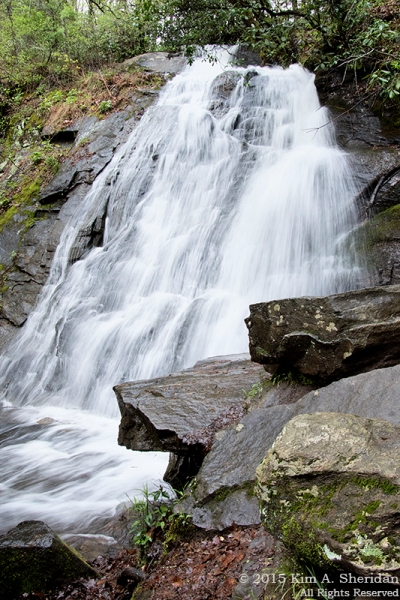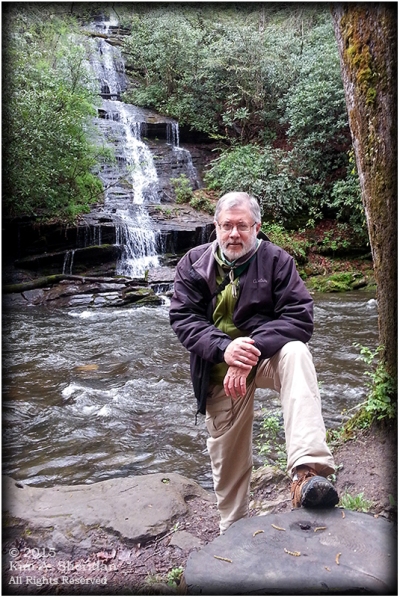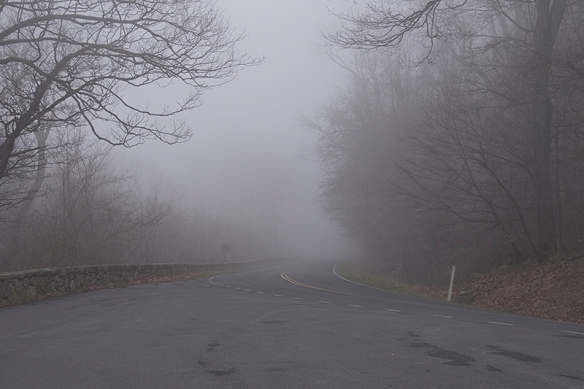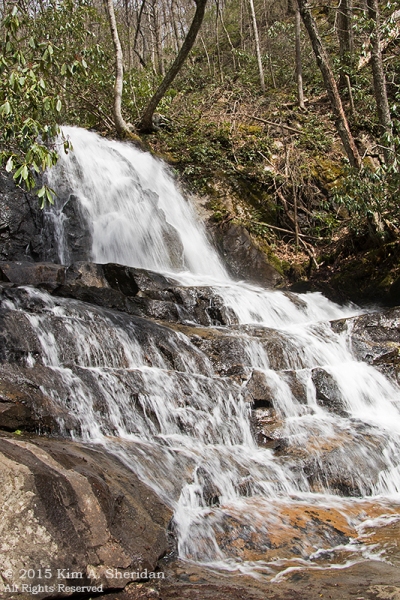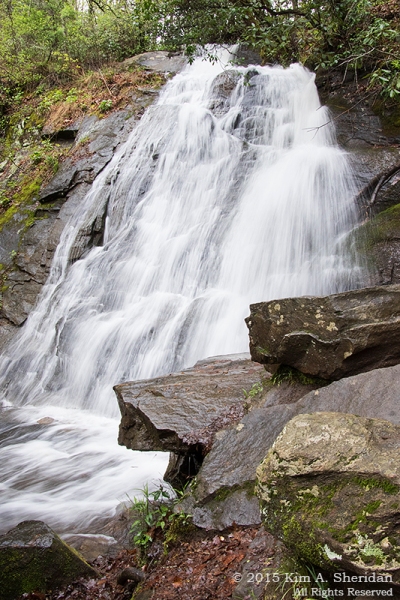
Country roads
Take me home…
Country roads feel like home, for that is where the journeys take place.
Journeys down sandy byways, through pines and marsh grass, to tea-colored rivers and salty bay beaches. Journeys down arrow-straight red dirt tracks, past wooden barns and fertile fields, to high dunes along crystalline lakes. Journeys down twisty two-lane roads, around hilly curves, to cliffs, meadows and waterfalls.
This Independence Day, those country roads took us home to the Appalachian Mountains. Home to a luxurious (and affordable!) cabin in Blackwater Falls State Park in West Virginia. By day, Robb, Don and I explored the Potomac Highlands region, a land of steeply folded mountain ridges, deep gorges and broad valleys.
 After checking into our cushy cabin, acquiring some vittles, and enjoying a yummy buffet at Blackwater Falls Lodge, we took our first look at Blackwater Canyon, 500 feet below. From on high, the Blackwater River is a pale ribbon woven through an undulating blanket of green.
After checking into our cushy cabin, acquiring some vittles, and enjoying a yummy buffet at Blackwater Falls Lodge, we took our first look at Blackwater Canyon, 500 feet below. From on high, the Blackwater River is a pale ribbon woven through an undulating blanket of green.
Up close, the forest resolves to trees of Eastern hemlock and red spruce, American beech and striped maple. Bracken ferns carpet the forest floor, alongside dense thickets of rhododendrons.

Conservation Piece: We saw lush stands of Eastern Hemlock all over the higher elevations of the Potomac Highlands, which top out over 4,000’. It’s hard to imagine the mountains without this beautiful tree. Yet the hemlocks are besieged by an invader from Asia, the hemlock woolly adelgid (ah-DEL-jid.) These sap-sucking insects appear as small white clumps on the twigs and needles and pose a serious threat to Eastern hemlocks throughout the Appalachians.
Not one day in the park could pass without a visit to Blackwater Falls. The trail is a wooden walkway interspersed with strategically placed landings amid more than 200 steps. At the bottom is a long boardwalk with an overlook near the base of the falls.
 We could see glimpses of the falls through the trees as we descended. We could hear the falls even before we got to the trail.
We could see glimpses of the falls through the trees as we descended. We could hear the falls even before we got to the trail.
 The classic tableau of Blackwater Falls.
The classic tableau of Blackwater Falls.
 Looking at the Falls in this orientation begins to give an idea of their size. The main drop is 57 feet.
Looking at the Falls in this orientation begins to give an idea of their size. The main drop is 57 feet.
What isn’t conveyed is a feel for the depth of the gorge through which the Blackwater River runs.
Or the force of the water. I asked Don, who’s been to Blackwater Falls a few times, how this stacked up in terms of relative water flow.
He said that this was one of the highest flows he’s witnessed at the falls, though he’d seen it higher.
A photograph can’t convey the other sensory delights of Blackwater Falls: the scent of hemlock, spruce and rich wet earth; the feel of mist blowing back from the falls; the roar of water plunging over the ledges.
Except…my camera takes videos. I rarely remember this feature, but I did this time. Click here for a 20-second video of Blackwater Falls and be sure the audio is turned up!
By the way, all of these photos were taken, not on our first night in the park, but the morning of July Fourth, two days later, while my traveling companions were still in dreamland. Tee-hee – I had the falls to myself. Heaven!
 Above the Falls is a 40-foot cliff of sandstone, a sedimentary rock composed of quartz and sand. We saw a lot of sandstone in the gorge and throughout the Highlands.
Above the Falls is a 40-foot cliff of sandstone, a sedimentary rock composed of quartz and sand. We saw a lot of sandstone in the gorge and throughout the Highlands.
 The most prominent ledge of the Falls. A lofty pulpit draped with satin vestments and backed by a rhododendron choir. Say “Hallelujah!” and pay attention to the preacher – there will be a quiz later.
The most prominent ledge of the Falls. A lofty pulpit draped with satin vestments and backed by a rhododendron choir. Say “Hallelujah!” and pay attention to the preacher – there will be a quiz later.

The baptismal font runneth over.
The Blackwater River gets its dark tea-color – and its name – from tannins in the soil of the hemlock and spruce woods and marshes through which it passes. Much like the rivers of the Pine Barrens are tea-colored from pine tannins. The similarities between the Pinelands and upper elevation habitats in Appalachia never ceases to amaze me.
 Above the falls, water cascades down a cockeyed staircase.
Above the falls, water cascades down a cockeyed staircase.
 The river below the Falls threads through a jumble of sharp sandstone boulders under verdant tree boughs.
The river below the Falls threads through a jumble of sharp sandstone boulders under verdant tree boughs.
 Long after the trees are gone…
Long after the trees are gone…
and the rocks tumbled to sand…
the mountains will endure…
yielding but ever so slowly to dark water’s caress beneath the bridges of time.

Life is old there, older than the trees
Younger than the mountains, growin’ like a breeze
Country Roads…
Where will you take us next?
Lyrics to “Country Roads” by John Denver, et al.
 Recap: Our intrepid band of explorers – Ron, Carol and I – had traversed a slippery, tortuous trail through the dark heart of Enfield Glen. We had passed a couple of large cascades, but were hearing something bigger. Much bigger, and much more ominous.
Recap: Our intrepid band of explorers – Ron, Carol and I – had traversed a slippery, tortuous trail through the dark heart of Enfield Glen. We had passed a couple of large cascades, but were hearing something bigger. Much bigger, and much more ominous.






















